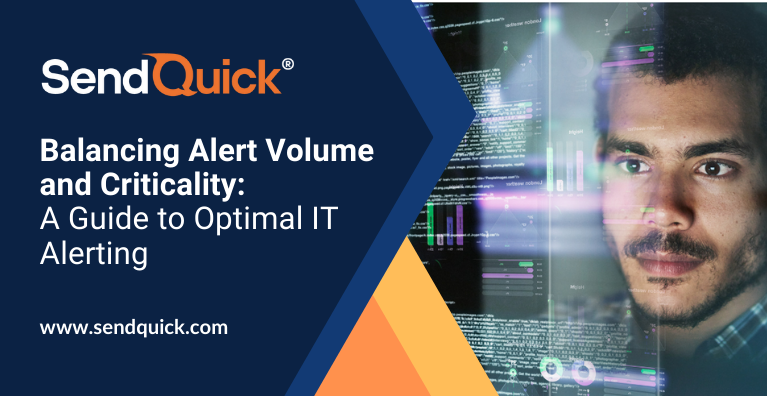Balancing alert volume and criticality is essential to ensure that IT teams are not overwhelmed by a flood of alerts, but also that critical issues are addressed promptly. In this article, we will explore some key strategies for optimizing IT alerting to achieve the right balance.
Understanding Alert Criticality
The first step in balancing alert volume and criticality is to understand the different levels of alert criticality. Generally, alerts can be categorized into three levels of criticality: low, medium, and high.
Low-level alerts are those that are informational in nature, such as a disk space warning or a minor application error. While these alerts should not be ignored, they do not require immediate attention.
Medium-level alerts are those that indicate a potential issue that could impact system performance or availability, such as a service outage or a spike in server CPU usage. These alerts should be addressed within a reasonable timeframe to prevent more significant problems from occurring.
High-level alerts are those that indicate an urgent issue that requires immediate attention, such as a security breach or a critical system failure. These alerts should be addressed immediately to minimize the impact on the business.
By understanding the different levels of alert criticality, IT teams can prioritize alerts and allocate resources accordingly.
Reducing Alert Volume
One of the biggest challenges of IT alerting is managing alert volume with a good alert management system. Too many alerts can quickly overwhelm IT teams, leading to alert fatigue and a decreased ability to respond to critical issues.
To reduce alert volume, it is essential to implement filtering and suppression rules. These rules can be configured to filter out low-level alerts or suppress alerts that occur during scheduled maintenance windows. By reducing the number of alerts that IT teams receive, they can focus on the most critical issues.
Additionally, it is important to ensure that alerts are being sent to the appropriate teams. Sending alerts to the wrong team can result in unnecessary alerts and delays in issue resolution.
Improving Alert Quality
In addition to reducing alert volume, it is also essential to improve the quality of alerts. High-quality alerts provide IT teams with the information they need to quickly diagnose and resolve issues.
To improve alert quality, it is important to include relevant information in the alert message. This information should include the severity level of the alert, the affected system or application, and a brief description of the issue. Including this information upfront can help IT teams quickly triage alerts and determine the appropriate course of action.
It is also important to ensure that alerts are actionable. Alerts should include clear instructions on how to resolve the issue, including any necessary steps or resources. Providing actionable alerts can help IT teams quickly resolve issues and minimize downtime.
Optimizing Alert Delivery
Finally, optimizing alert delivery is crucial to ensuring that alerts are received in a timely and effective manner. Alert delivery can be optimized by using a variety of delivery channels, including email, SMS, social messengers and collaboration tools. By providing alerts through multiple channels, IT teams can ensure that alerts are received even when team members are away from their desks.
Additionally, it is important to ensure that alerts are delivered to the appropriate individuals. This may involve setting up escalation paths to ensure that critical alerts are addressed promptly or setting up on-call schedules to ensure that alerts are received by team members who are available to respond.
Conclusion
Balancing alert volume and criticality is a key component of effective IT alerting. By understanding alert criticality, reducing alert volume, improving alert quality, and optimizing alert delivery, IT teams can ensure that they are responding to the most critical issues in a timely and effective manner. By following these strategies, IT teams can achieve optimal alerting and maximise productivity and profitability.
If your business is interested in a comprehensive and centralised IT alert management system that helps you achieve real long-term savings, look no further than SendQuick’s IT alert notification management platform.
Our solution eliminates alert fatigue among IT teams by notifying the right people in real-time for quick resolution, integrates with multiple channels and monitoring tools, and is fully customizable to your operational needs. As a leading provider of enterprise mobile messaging solutions, we also offer other products such as call tree system, security and MFA, business process automation, and local SMS gateway in Singapore. To learn more about our products, visit our solutions page today or contact us to speak with a SendQuick expert for more details.






